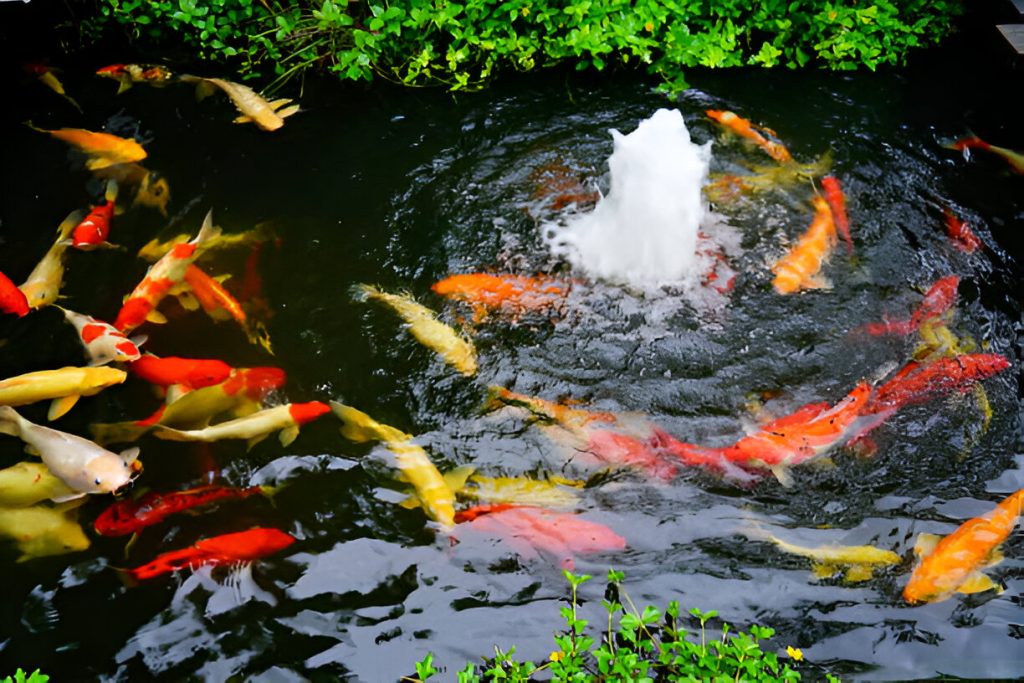Do you have an idea about a pond air pump? It is an unsung hero in koi care. Far from a basic accessory, this tool actively infuses water with oxygen, safeguarding your fish against seasonal stress, algae invasions, and overcrowding. But with shelves and online stores flooded with options, how do you pick the right one? Let’s demystify the selection process.
Why Oxygenation Matters for Koi Survival?
Koi can handle a lot, but stagnant water? That’s their breaking point. It results in the drop of oxygen levels, and you’ll find them gulping at the surface like marathon runners without a finish line. Summers turn ponds into oxygen deserts, while winter ice acts like a lid, trapping methane and other poisons below, which can harm your fish.
Choosing the right company matters!
A pond air pump tackles both issues: it breaks the water’s surface to boost gas exchange and drives oxygen to deeper zones. Reputed companies like the That Pond Guy offer pumps with commercial-grade diaphragms for heavy use and lifetime warranties on key components. Their experts can tailor recommendations to your pond’s exact gallonage, depth, and fish count—a level of service mass-market brands rarely match.
Selecting Your Pump – Key Points To Remember
1. Match Pump Capacity to Pond Dimensions
Airflow ratings (measured in litres/hour or gallons/minute) and depth compatibility are non-negotiable. A compact 500-gallon pond may thrive with a 20-watt pump, while sprawling 2,000-gallon setups often need 100+ watts. Depth dictates strategy: shallow ponds benefit from surface agitation, while deeper systems require robust pumps to oxygenate the bottom. Expert Insight: Opt for a pump rated 1.5x your pond’s total volume to buffer against debris buildup, fish overcrowding, and temperature swings.
2. Prioritize Energy-Smart Designs
Pumps running continuously can drain your wallet. Seek energy-efficient models with DC motors or adjustable speeds that dial down output during low-demand periods. Solar pumps exist but struggle in overcast climates.
3. Silence Is Golden
A noisy pump disrupts garden serenity. Diaphragm pumps typically outperform piston models in quiet operation. Compare decibel levels—under 50 dB ensures peaceful backyard moments.
4. Bonus Features Worth Considering
- Built-in filtration to sync with existing pond systems.
- Battery backups to sustain oxygenation during storms or outages.
Pitfalls to Sidestep
- One-Size-Fits-All Mentality
A pump perfect for summer may over-aerate in winter. Use dual-outlet models to toggle between airstones as seasons change.
- Haphazard Placement
Keep pumps elevated higher than your pond’s waterline as this stops messy backflow issues. Throw a slatted cover over them to block harsh sun and rain showers while still letting air move freely.
Setup & Upkeep for Longevity
- Optimize Airstone Placement
Anchor diffusers in the pond’s deepest section to disrupt stagnant zones. Keep them away from koi’s preferred resting spots.
- Inspect Tubing Annually
Sunlight degrades airline tubing. Replace yellowed or cracked lines before they fail.
Closing Advice
Selecting an air pump isn’t a mere purchase—it’s a commitment to your koi’s vitality. Proper oxygenation enhances their colors, activity, and resistance to illness. By focusing on energy efficiency, weatherproof construction, and trusted suppliers, you’ll craft a sanctuary where your koi can thrive for years.








